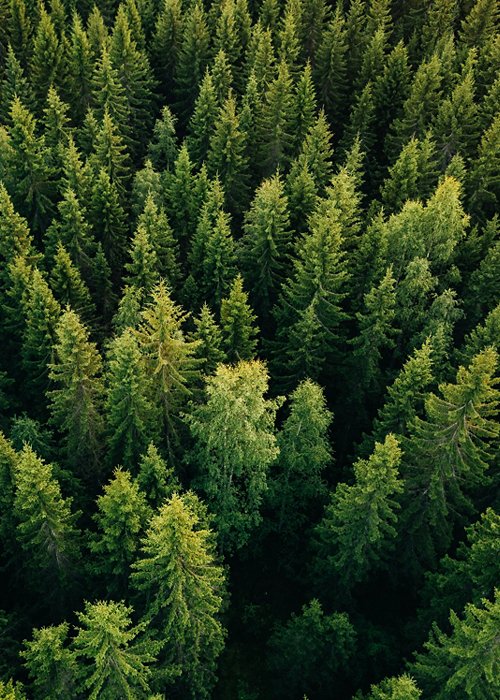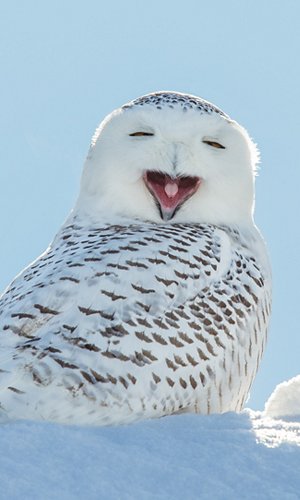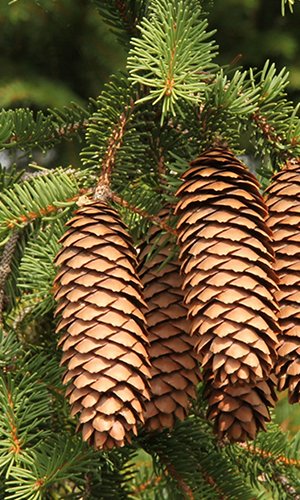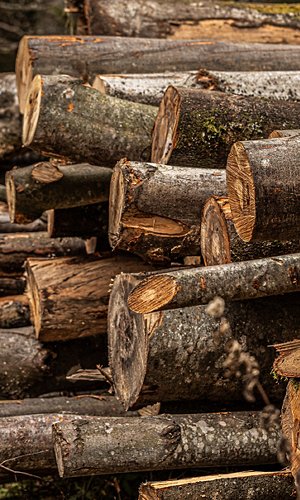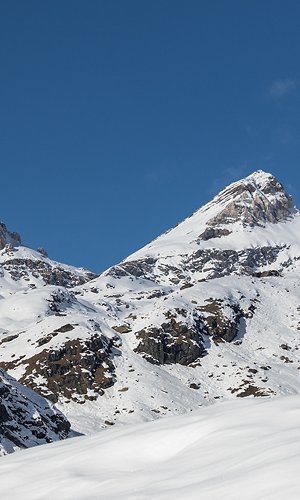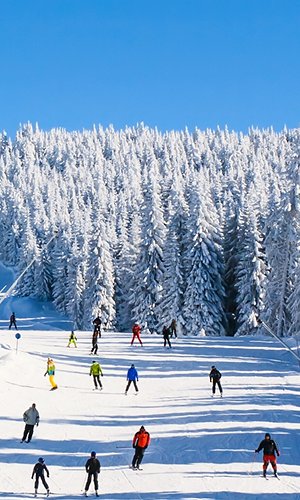The strip nearest to the temperate zones, in Eurasia and in North America, is the taiga, also known as coniferous forest, of fir and larch trees. This area is characterized by a rather rigid climate in winter, when the temperatures can drop to even -30°C and cool summers, when a maximum temperature of 20°C may be reached. The evergreen conifers thrive in the forests of the cold temperate regions, the trees have a conical shape and the leaves are needle shaped and have an outer wax coating. Evergreen conifers do not let much light reach the underbrush where only evergreen stumped shrubs, moss and lichens grow. Many animals have a thick fur coat while others hibernate in order to escape the intense winter; to survive, squirrels collect abundant supplies of nuts and berries in autumn.

